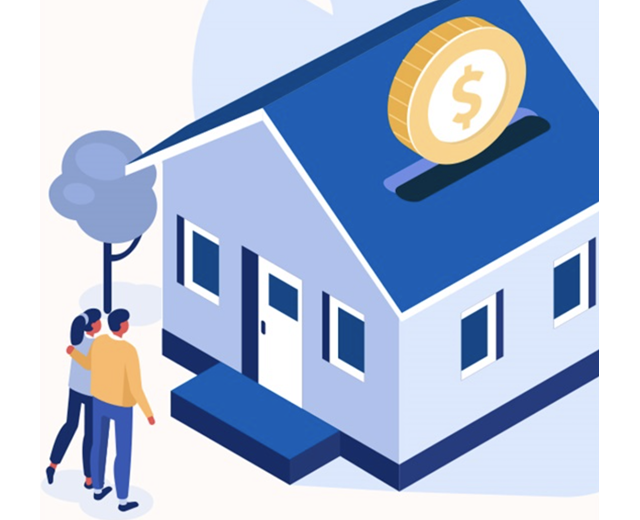Conventional Mortgage Loans: The Preferred Choice for Homebuyers
Conventional Mortgage Loans: The Preferred Choice for Homebuyers
Blog Article
The Crucial Elements to Consider When Deciding On Between Fixed-Rate and Adjustable-Rate Home Mortgage Finances
When reviewing mortgage options, consumers face a critical choice between adjustable-rate and fixed-rate finances, each providing unique benefits and potential challenges. Trick factors to consider such as rates of interest stability, predictability in regular monthly repayments, and the ramifications of prospective price modifications can substantially impact long-term economic health. Furthermore, understanding the anticipated period of homeownership and the general price of loaning can form one's technique. As these aspects link with individual economic circumstances and take the chance of resistance, the effects of this option may not be as straightforward as they seem. What subtleties should be focused on in this essential decision-making process?
Rate Of Interest Price Security
When choosing a mortgage, understanding passion price security is vital for educated decision-making. Rates of interest can substantially influence the total price of a home mortgage, and acknowledging the nature of these prices is necessary for customers. Fixed-rate home mortgages offer the benefit of consistent month-to-month payments over the life of the loan, protecting consumers from market changes. This security enables property owners to intend their finances with higher assurance, as they will certainly not be affected by rising passion rates.
On the other hand, variable-rate mortgages (ARMs) start with reduced initial rates that might transform occasionally based upon market problems. While this can result in reduced repayments initially, it likewise presents uncertainty, as consumers may encounter increased payments if rate of interest increase. For those considering an ARM, it is important to analyze the probability of price modifications, the capacity for settlement rises, and the size of the first fixed-rate duration.
Eventually, the option between adjustable-rate and fixed-rate home loans depends upon private danger tolerance and financial circumstances. Understanding interest rate stability aids consumers make educated choices that align with their lasting economic goals.
Monthly Payment Predictability
While customers usually prioritize passion rate stability, the predictability of month-to-month payments is similarly vital in the home mortgage option procedure (Conventional mortgage loans). Regular monthly repayment predictability plays a critical duty in budgeting and financial preparation, as it directly affects a house owner's capital and general financial health
Fixed-rate home loans offer a regular month-to-month payment throughout the life of the loan, allowing customers to expect and plan their expenses successfully. This stability can be specifically beneficial for first-time homebuyers or those on a fixed earnings, as it gets rid of the uncertainty linked with changing repayments.
Conversely, variable-rate mortgages (ARMs) typically feature lower preliminary payments that can change gradually, resulting in possible irregularity in month-to-month obligations. While originally appealing, this unpredictability can complicate monetary preparation, particularly if borrowers do not represent future price modifications.
Possible Price Adjustments
In the realm of adjustable-rate home loans (ARMs), potential rate adjustments stand for a considerable aspect that borrowers should meticulously take into consideration. Unlike fixed-rate mortgages, where the passion price continues to be unchanged for the life of the loan, ARMs are characterized by varying interest prices that are connected to market indices. This irregularity can lead to significant adjustments in monthly payments, affecting the debtor's monetary preparation and budgeting.
Generally, ARMs have an initial fixed-rate period during which the rates of interest is secure. Hereafter period, however, the rate adjusts at fixed periods-- commonly each year. Borrowers need to understand the margin and index used to compute these adjustments, as they straight affect future rate of interest. Additionally, ARMs often consist of caps that restrict just how much the passion rate can enhance at each adjustment and over the life of the loan, which can supply some level of security versus extreme price walkings.
Comprehending these prospective changes is important for customers, as they straight impact long-term settlement responsibilities. As a result, examining individual monetary situations and take the chance of resistance is essential when determining whether an ARM aligns with one's economic goals.
Lending Term Considerations
Funding term factors to consider play a crucial role in the decision-making process for borrowers choosing between fixed-rate and adjustable-rate home loans. The length of the funding term substantially influences month-to-month payments, passion prices, and general monetary planning.

Inevitably, debtors should evaluate their individual conditions, financial goals, and market conditions when weighing the effects of lending term selections within each home mortgage kind.

Overall Cost of Loaning
The total cost of loaning is a vital aspect that can substantially influence a borrower's selection in between adjustable-rate and fixed-rate mortgages. Fixed-rate home mortgages offer predictable regular monthly settlements, as the rates of interest stays consistent throughout the funding term. This predictability can lead to lower general expenses, specifically in a steady or decreasing rates of interest atmosphere. Borrowers can budget efficiently, recognizing their repayments will certainly not change.
Conversely, adjustable-rate home mortgages (ARMs) usually begin with reduced initial prices, leading to lowered upfront prices. These prices can increase after an initial period, leading to possibly greater long-term expenses. Debtors must take into consideration the frequency and extent of rate modifications, along with the overall car loan period, to precisely examine the financial effects.
Furthermore, the total price of borrowing incorporates not only rate of interest yet also charges and other connected prices, such as shutting expenses and insurance (Conventional mortgage loans). When reviewing home mortgage choices, borrowers ought to conduct a thorough expense evaluation over the life of the loan. By doing so, they can make an informed decision that straightens with their economic goals and risk tolerance
Verdict
Finally, choosing between fixed-rate and adjustable-rate home webpage loan financings demands mindful consideration of several vital factors. Rate of interest stability and regular monthly repayment predictability are paramount for reliable budgeting, while the capacity for price adjustments in ARMs presents monetary uncertainty. In addition, the expected duration of homeownership and the overall expense of loaning, consisting of rate of interest and linked costs, have to align with private financial situations and run the risk of resistance. Such a comprehensive analysis will help with educated decision-making in mortgage choice.
Secret factors to consider such as interest rate security, predictability in month-to-month repayments, and the effects of potential rate modifications can helpful hints significantly impact long-term economic health. Interest rates can substantially affect the total expense of a home loan, and identifying the nature of these rates is important for customers. Unlike fixed-rate home loans, where the passion rate stays unmodified for the life of the finance, ARMs are characterized by changing interest prices that are linked to market indices. Additionally, ARMs frequently include caps that limit exactly how a lot the interest price can increase at each adjustment and over the life of the financing, which can offer some level of defense against drastic price walks.
Passion rate stability and regular monthly payment predictability are paramount for reliable budgeting, while the potential for rate adjustments in ARMs presents monetary uncertainty.
Report this page